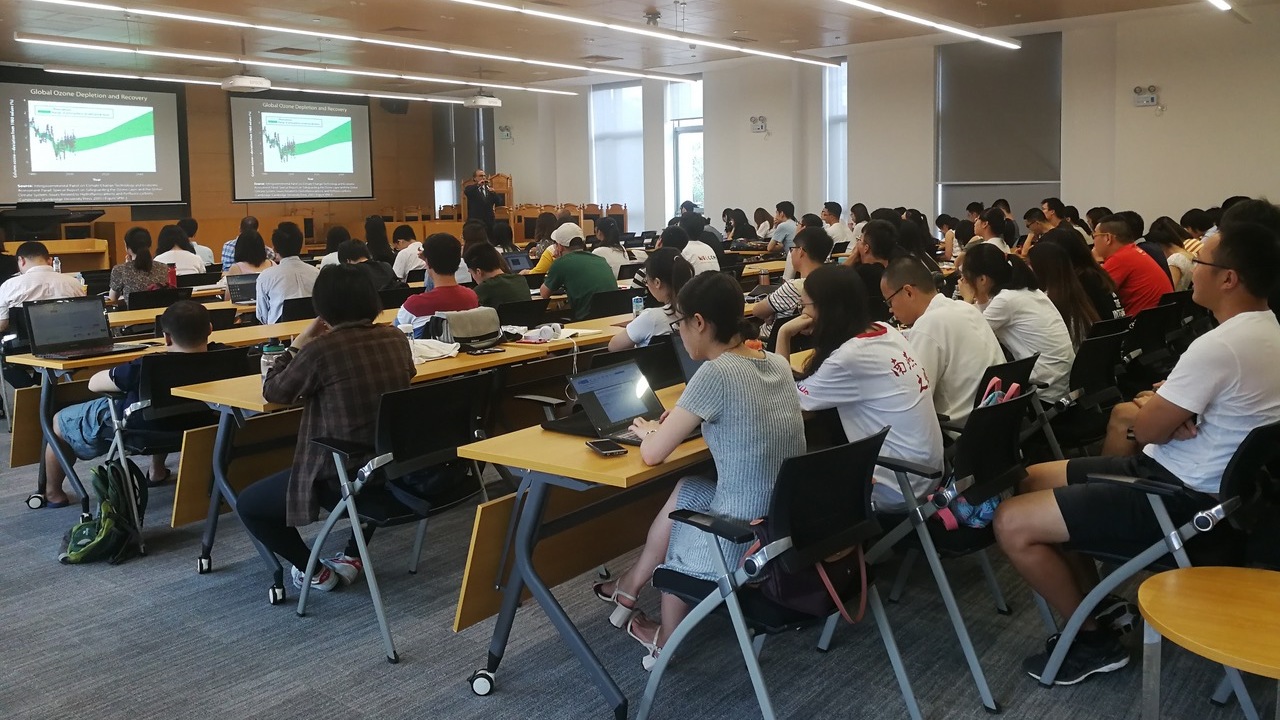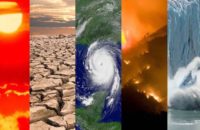International Ozone Day in Peking University-Where it matters

It was silent but successful global revolution that lasted nearly 30 years. The Montreal Protocol on Substances that Deplete the Ozone Layer, an international and multilateral environmental treaty has created history. It has become an amazing story of unprecedentedglobal cooperation ever seen by humanity. It also has become
classical case-study in the success of environmental diplomacy.
It was silent but successful global revolution that lasted nearly 30 years. The Montreal Protocol on Substances that Deplete the Ozone Layer, an international and multilateral environmental treaty has created history. It has become an amazing story of unprecedented global cooperation ever seen by humanity. It also has become classical case-study in the success of environmental diplomacy.
The Montreal Protocol is usually referred to as a landmark agreement, an inspiring journey of international cooperation paving the way for other environmental treaties to follow suit, including the Paris Climate agreement among others.
Most of us did not even realize that in just one human generation we invented Chlorofluorochemicals-CFCs, rejoiced their multifaceted use in our daily life and then simply phased-out their production and
consumption from our planet when we realized their life-threatening consequences. These chemicals were found to be destroying the stratospheric ozone layer which protects the life on the Earth from deadly Ultra-Violet (UV) rays. Life on the Earth exists because of the Ozone Layer’s protective shield.
The world, thus, prevented the catastrophe of planetary proportion by phasing out these chemicals exactly as per agreed schedule through a global action called OzonAction.
Rajendra Shende led OzonAction from United Nations Environmental Programme from its office in Paris.
September 16 is designated as International Day for the Preservationof the Ozone Layer ( popularly known as Ozone Day, as per theresolution of the United Nations General assembly In 1994. 16 th September is the date of the signing, in 1987, of the Montreal Protocol on Substances that Deplete the Ozone Layer.
As we celebrate 24 th Ozone Day, in Shenzhen in China we can lookback with pride on what we have achieved.
“Perhaps the single most successful international environmental agreement to date has been the Montreal Protocol, in which states accepted the need to phase out the use of ozone-depleting substances”, stated former UN Secretary General Kofi Annan in his report of year 2000, called “We the Peoples: the Role of the United Nations in the 21st Century”,
“…20 years after the Montreal Protocol signed Demonstrates what can be achieved when countries act together and in concerted way to resolve global environmental problems stated the Millennium Development Goals (MDGs) report in 2007.
The closure of the hole in the ozone layer is on the way and has been observed by the scientists 30 years after the Protocol was signed. Latest Science Assessment Panel’s report , for which Mr. Shende is
the expert reviewer has stated that world would see the Ozone Layer restored by mid Century i.e. by 205-2060.
The good sunny news is now overshadowed by the disappointing news about inaction on Climate Change and particularly related to Paris Climate Agreement.
The world leaders are miserably failing to learn from these lessons from the Montreal Protocol as they grapple with the defining challenge of our time i.e. threat of climate change.
Why the one international environmental treat succeeds, where as another treaty that runs almost concurrently does not?
Why the country like USA whose government who vehemently agreed and acted on the Montreal Protocol, never ratified the Kyoto Protocol on Climate change and now threatened to withdraw from the Paris Climate Agreement?
Why the chemicals that affected the Ozone Layer were nearly phased out in just about 30 years and the Green House Gases continue to increase at catastrophic rate without showing any signs of slow down?
Is it not the right time to reflect on these questions that would define the future of humanity and the life on the Earth?
Rajendra Shende, Chairman of TERRE Policy Centre, IIT Bombay Alumni and Former Director of UNEP with his hands-on experience in international negotiations and global implementation of
atmospheric treaties will discuss the lessons from the Montreal Protocol on the occasion of the Ozone Day. END



Leave a Reply